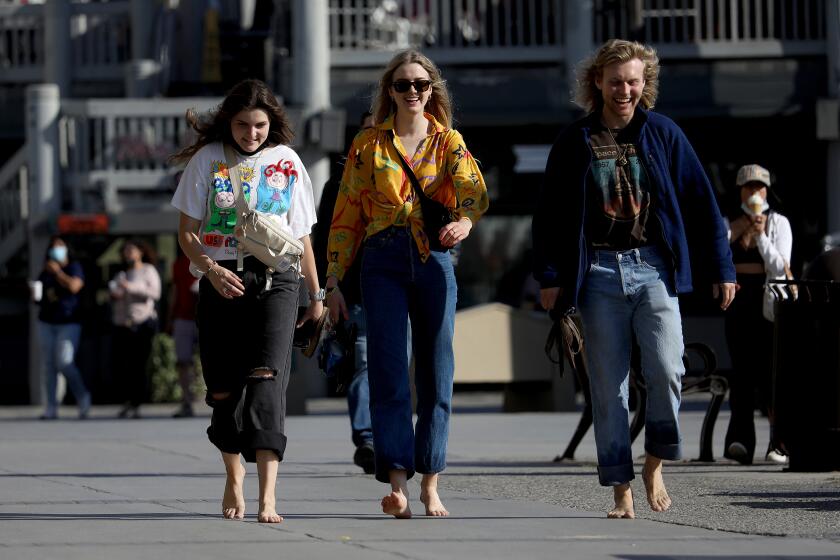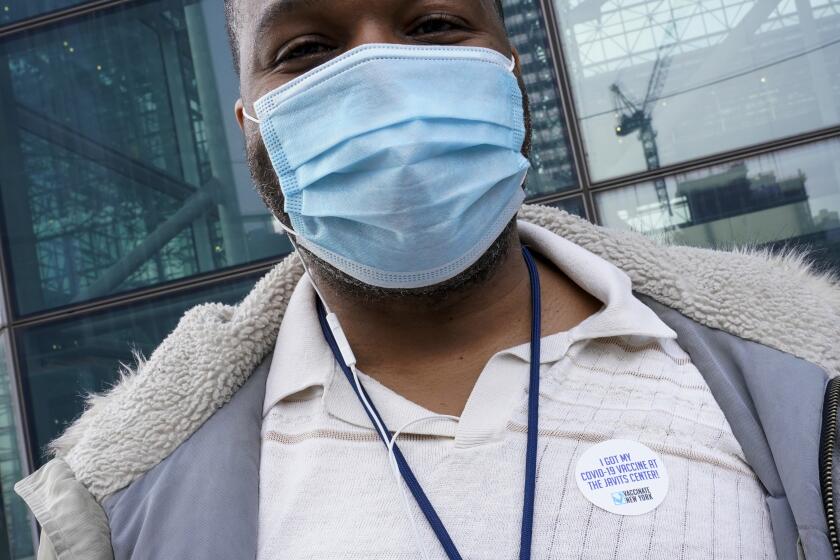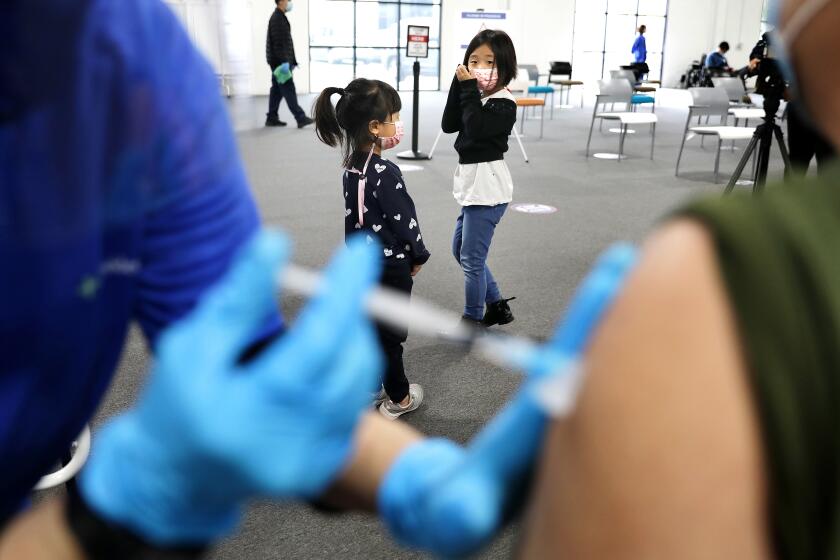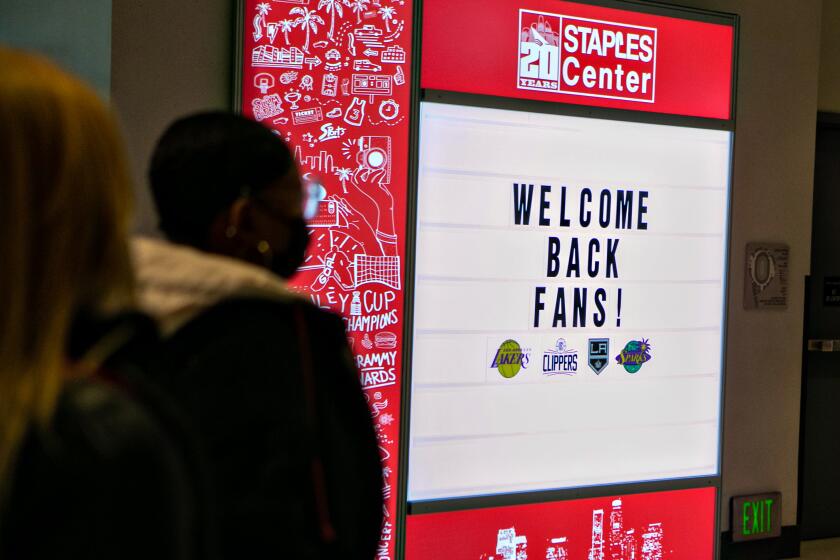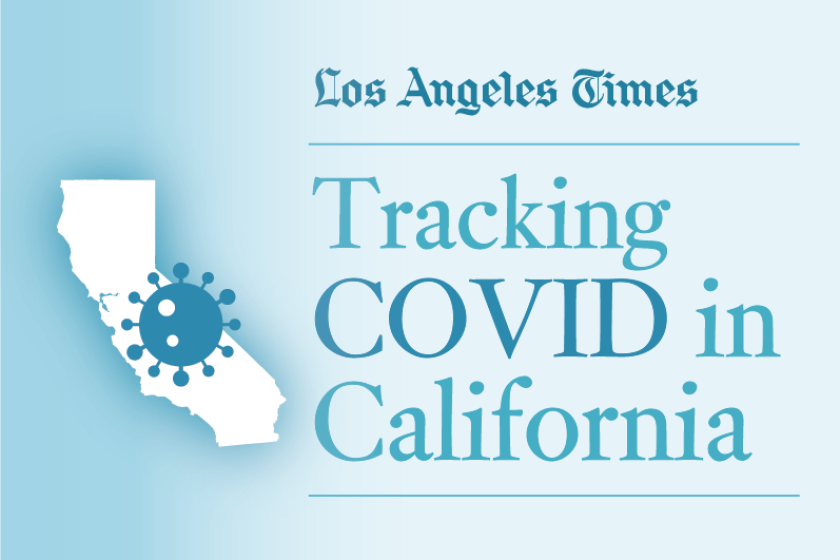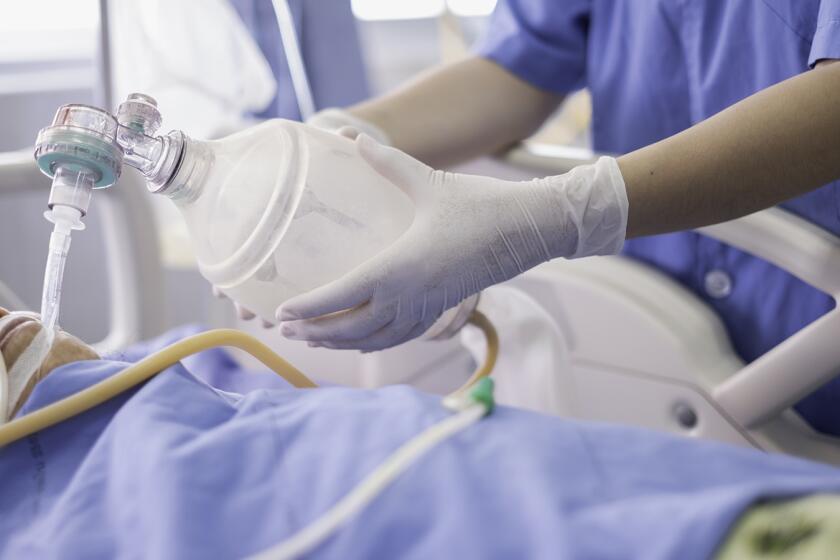Is it finally safe to get back to normal, pre-COVID-19 life? Here’s what experts say
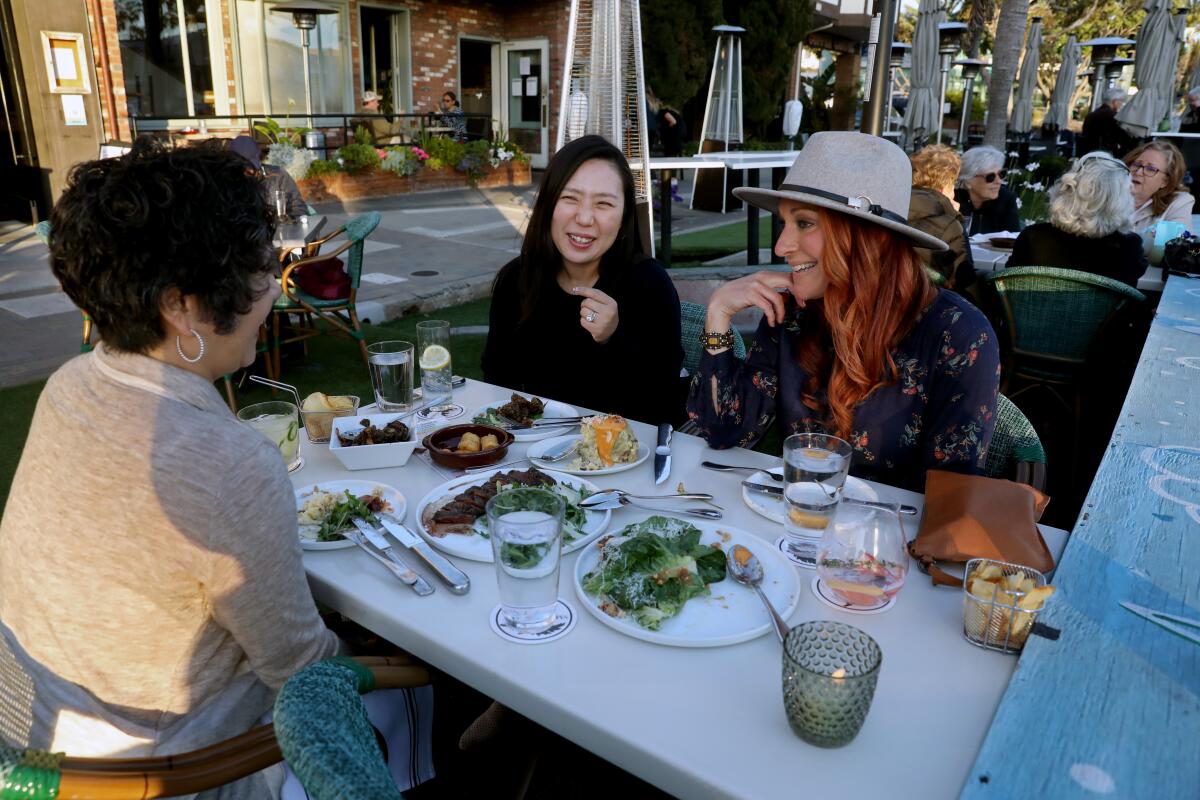
- Share via
In many ways, this week is a turning point in the battle against COVID-19.
Disneyland will reopen Friday after being closed for more than a year.
Coronavirus cases in Los Angeles County are so low the area is on the cusp of moving to the yellow tier — the most lenient of California’s four-category color-coded reopening system — which would trigger dramatic reopenings.
And those people who are fully vaccinated against COVID-19 can safely stop wearing masks in many outdoor settings, the U.S. Centers for Disease Control and Prevention said Tuesday.
But there are still reasons to be cautious. As the situations in Oregon and India show, the coronavirus remains a threat.
When do I still need to wear a mask and when can I go without? Here’s how to stay safe
What are some things experts are still cautious about doing?
This month, Dr. Robert Wachter, the chairman of the UC San Francisco Department of Medicine, said in an online seminar that he has been comfortable getting a haircut and flying to see his parents now that he’s fully vaccinated. He also felt comfortable resuming a monthly poker game with fully vaccinated friends, he recently tweeted. But the 63-year-old hasn’t been eager to go to an indoor restaurant and take off his mask there.
“I’m confident I’m not going to get hospitalized and die. That feels good. But I don’t particularly want to get mild COVID because I don’t know for sure that that can’t turn into ‘long COVID’ or some long-term consequence that I don’t understand yet,” Wachter said at the seminar.
“Long COVID” refers to a number of symptoms that have persisted for months in people who have survived a coronavirus infection. They include fatigue, shortness of breath, sleep disorders, fever, stomach problems, anxiety, depression and difficulty concentrating or focusing, which some people call “brain fog,” Dr. Anthony Fauci, the U.S. government’s top infectious-disease expert, said in a briefing.
The severity of long COVID “can range from mild, annoying to actually quite incapacitating,” Fauci has said.
Long COVID persists even after the virus has essentially been cleared from the body. Alarmingly, Fauci said, about 30% of patients enrolled in one study reported persisted symptoms of long COVID for as long as nine months.
U.S. health officials see two kinds of people: Those who are vaccinated and those who aren’t. They’re trying to get unvaccinated Americans to switch sides.
How do other doctors feel about dining inside?
Other fully vaccinated doctors have been comfortable returning to indoor restaurants, at least at places they know well in California.
“Personally, I’m 69 years old, I’m vaccinated. I probably have a few extra risk factors. I’m comfortable eating indoors at the places I know,” Dr. George Rutherford, an epidemiologist at UC San Francisco, said in an interview.
In the online seminar, Dr. Peter Chin-Hong, a UC San Francisco professor of medicine and infectious-disease specialist, said that if he goes to an indoor restaurant, he would reduce his risk by sitting near a window or making sure to put on his mask when he goes to the restroom.
Dr. Monica Gandhi, a UC San Francisco professor of medicine and medical director of the HIV Clinic at Zuckerberg San Francisco General Hospital, said in the online forum that she was comfortable bringing her two unvaccinated children and two fully vaccinated parents — ages 87 and 80 — to an indoor restaurant in San Francisco.
“I felt perfectly safe,” Gandhi said. Part of that had to do with the extraordinarily low amount of virus circulating in San Francisco, so she felt that “likely I was not exposing my parents to COVID.”
But a doctor might make a different decision about indoor dining if, say, they were living in Michigan, home to the nation’s highest rate of coronavirus cases, Chin-Hong said.
California has the lowest number of coronavirus cases per capita in the U.S., while Michigan has the highest.
Over the last week, California has reported an average of 1,901 new cases per day, a 34% decrease from two weeks ago, according to data compiled by The Times.
What about wedding receptions?
The mixing of vaccinated and unvaccinated people at an event “is always a little iffy,” Rutherford said. Risks can be reduced by following the guidance issued by California, he said.
Wedding receptions, meetings and conferences are now allowed in California, with modifications that depend on the level of virus circulating in a county.
In Los Angeles County, which is in the second-least restrictive, or orange, tier, outdoor receptions can be held with a maximum of 300 people if everyone tests negative for the virus or can show proof of vaccination, or a maximum of 100 people if vaccination or recent test records are not checked. Indoor receptions can be held if all guests show negative coronavirus tests or proof of vaccination, with the number of guests capped at 150.
The CDC and California Department of Public Health are urging people to delay travel until they are fully vaccinated.
Lakers fans should expect extensive safety changes, including a ban on all bags, for games at Staples Center.
How about going to sports games or larger conventions?
Rutherford said he thinks California’s rules for watching live professional sports events are well thought out. “Just follow the rules,” he said.
And while Gov. Gavin Newsom has looked at “fully reopening” the state’s economy June 15 if vaccine supply is ample and hospitalization rates remain low, there are some important regulations that will be expected.
For instance, large-scale indoor events, such as conventions, would require testing or vaccination verification, Newsom’s office has said.
San Francisco’s George R. Moscone Convention Center has booked its first convention since the pandemic began: a convention of hand surgeons to be held Sept. 30 to Oct. 2.
“They’re all surgeons. They’ll all be vaccinated,” Rutherford said.
California has a relatively low case rate. Will the state avoid a fourth wave?
“We just don’t know,” Rutherford said. Colorado, Washington, Oregon, Nevada and Arizona are among the states experiencing increasing case numbers.
There are several factors that help determine whether a new wave will come, Rutherford said.
First, what proportion of the population has been vaccinated?
Second, are people still wearing masks and keeping physically distant?
Third, have variants emerged that are more transmissible and difficult to control?
One possible explanation for the surge in Michigan is how the highly contagious U.K. variant (B.1.1.7) is dominating there; it has not done so as much in California or Arizona.
Fourth, are residents who remain unvaccinated living clustered together in a way that would worsen an outbreak?
A Times analysis found that only 35% of people living in the most disadvantaged areas of California have received at least one dose of a vaccine, while 57% of people living in the most prosperous areas of the state have received at least one dose.
Fifth, how soon will adolescents be eligible to get the vaccine? Authorization of the Pfizer-BioNTech vaccine for children as young as 12 is something that will be needed to really slow transmission, Rutherford said.
And sixth, how much vaccine is available? A robust supply will help ease the threat of a fourth wave.
What makes some COVID-19 patients so much sicker than others? In some cases, people are more vulnerable because their immune systems are hit by friendly fire.
How vaccines can fail in rare cases
In Kentucky, an unvaccinated healthcare worker is believed to have brought the coronavirus into a nursing home. An outbreak resulted, leaving 26 residents infected — including 18 who were fully vaccinated — and 20 healthcare workers, four of whom were fully vaccinated.
Three residents died — two who had not received any doses of vaccines and one who had been fully vaccinated, having received both doses of the Pfizer vaccine more than 14 days before the outbreak was identified, according to the CDC.
One of the unvaccinated people who died had previously been infected by the coronavirus and survived before being reinfected.
That death demonstrates the rare risk of reinfection and underscores the importance that everyone — including survivors of COVID-19 — still get the vaccine, the report said.
Experts say that the level of immunity provided by vaccinations is better than that from having survived COVID-19.
“Even if you’ve had past infection, you really do get a boost in antibody levels with vaccination,” said Dr. Paul Simon, chief science officer with the L.A. County Department of Public Health.
More to Read
Sign up for Essential California
The most important California stories and recommendations in your inbox every morning.
You may occasionally receive promotional content from the Los Angeles Times.
